We interview Till Nowak on the making of his extreme amusement rides documentary "The Centrifuge Brain Project" and his experience of directing and filming, as well as producing the 3D animation for the short.
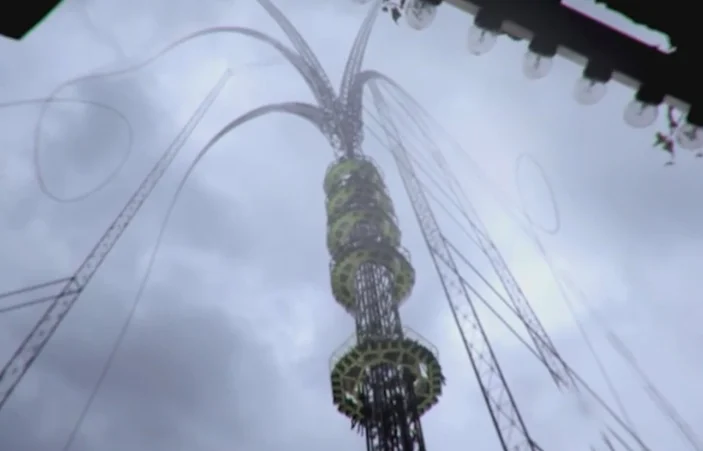
The Interview
After you finished the CG rides for “The Experience of Fliehkraft” exhibition, what prompted you to push the idea further and create a film integrating these rides?
I love art and I love film. Art is about creation, freedom, the imagination and a lack of purpose, while film is storytelling, character and the illusion of an alternate reality. For this project I started with the artistic work, with no specific goal, no purpose, just an idea. Once I had the realistic video clips of the amusement rides I wanted to create an even stronger clash between realism and absurdity.
The art world and film world are very different and usually there is not much intersection between the two of them. The film world exists at film festivals, in the cinema, the internet and TV and the art world exists in galleries, museums, art fairs, auctions and collections. Usually my projects are either focusing on the artistic or the cinematic aspect, but this project really lives in both of these worlds. This means, that besides the extended content of the project, it was also an experiment for me to create an absolute art-film-hybrid.
How did you end up choosing a fake documentary approach?
I never was a fan of heavy stylization, I always loved a realistic approach. So if you choose the most realistic style for a fictional film you automatically get close to a mockumentary. It was never my intention to make people really believe that this was real, I just wanted the audience to feel as if they were eye witnesses, to enhance the impact of the idea. Films like “District 9” or “Children of Men” were a big inspiration for me. And since 15 years I worked for many real TV documentaries, which probably had an influence on me as well.
You went to great lengths to build a convincing façade for the film. Which were for you the most important elements to accomplish this?
I think the most important aspect is the believability of the character. Leslie Barany was perfect for the role, because he turned out to be a very good liar. We had two days of filming, one day in the laboratory and one day at the amusement park. At first he used the exact words that I had written for him, which didn’t sound natural. But after a few takes I asked him to ignore the text and tell me about the ideas that he remembers from the text as if he would lie to me, try to convince me as his interview partner. That was the breakthrough moment – when he stopped acting and started lying.
I think Leslie’s great performance is the reason why a shocking percentage of people actually believe that it is a true documentary. I was very surprised, because to me and to other media professionals it’s an obvious fake, but many “normal” people in the audience think it is true. This reflects another important aspect of the film: How much we trust in images and media. And of course the quality of the visual effects is another critical aspect for the believability.
How did you approach the process of writing the dialogue for Dr. Laslowicz?
I had the direction for the monologue in my head for a while, but I actually just wrote it two days before the shooting. I wrote it down in almost one continuous flow, in a few hours. Usually I am not so quick and easy in writing, but in this case it felt as if the humor and philosophy that I was carrying in my head since years just had to be released. There were no other people involved in writing it, but Leslie took my ideas and extended them with his own humor and style. So you could say that the final text is my writing in Leslie’s words.
I knew I wanted a seemingly serious, but crazy scientist, but the actual character of Dr. Laslowicz was defined a lot by Leslie himself, because his presence and charisma is really what makes it. I had some rough references and inspirations for the setting, like this http://www.youtube.com/watch?v=Uef17zOCDb8 or the absurd bureaucracy in “District 9” in general.
I had no technical reference for the short film. I created the manipulated amusement rides and the techy talk just out of my own scientific humor. They are a mix of real physics, absurdity and deliberate contradictions. The goal was to create the biggest possible mistake, but still make it sound serious and convincing.
For “The Experience of Fliehkraft”, which is an art project related to the film, I created technical construction plans for the amusement rides, which I printed on paper. I took all kinds of existing construction plans and mixed them with the actual 3D geometry of my visual effects like a complex collage that has nothing to do with real engineering – in fact it’s the total opposite of real engineering.
How was the experience of working and rehearsing with Leslie Barany?
Working with Leslie is great fun, because he is the living intersection of a crazy genius and a naughty boy. This combination creates lots of possibilities for creative collaboration. Leslie lives in New York City and I had asked him to shoot this little short film with me when he was in Germany for a week to work with me on another project. I gave him the text only one day before shooting. He sat down and worked through it, changing it into his words and getting used to the ideas, and on the next day he performed as the scientist, although he never had anything to do with a laboratory or science before.
Another important member of our team is Ivan Robles Mendoza, our cinematographer, who came to Hamburg for two days of shooting. Leslie, Ivan and me worked like a guerrilla team, very spontaneous and intuitive, which is a reason for the film’s authenticity and only possible in a very small team of people who know each other well.
You also edited the film. What interesting things did you find during editing?
The editing took me two months, just for this little 6 minute film, because almost every sentence of the scientist is assembled from different takes, or has single words edited out or in. I had to do this to create a seamless flow of words out of many improvised and spontaneous takes.
Another challenge was the beginning: How long should it take until you see the first obvious visual effect and how to build the gradual escalation until the end. The final version was edited for cinema screenings at film festivals, because after one minute of seemingly boring introduction the audience is in the perfect condition to get sucked into absurdity, while on the internet the beginning is a little too slow and the youtube audience would need the first spectacular joke within 20 seconds to stay with the film, they don’t watch a full minute until it becomes interesting. Keeping this in mind it’s almost a miracle that it got 2.5 million views on Youtube.
Another editing issue was the ending. There is an alternative version in which the questions of the interview become more and more accusative and Dr. Laslowicz finally walks away and cancel the interview. However, I finally decided to go with the version that concludes in his weird philosophical ideas that reveal his key mistake, which is to reject our natural limits. But I think I will release an alternative version of the film one day, which also includes the alternative ending,
How was the process of creating the CG rides?
I created the seven CG rides as an artistic idea before I even knew it would become a short film. Every couple of months, in between other projects, I invested one or two weeks per ride to create each of the short clips, until I had seven of them. I think these sequences took me three months of work, spread between 2008 and 2011.
They were all created in the same steps: first I shot completely unplanned and freehand camera videos of real amusement rides. Then a matchmoving software analyzed the camera motion, so that I was able to integrate my own animations on top of the shaky hand camera footage. Then I modeled, textured and animated the crazy extensions [in 3DS Max]. The main challenge was to attach them seamlessly to the real moving amusement rides. Finally I did the compositing with lots of subtle effects to blend the borders between reality and animations.
Have a look at this:
http://www.old.framebox.com/creations/fliehkraft/making-of-the-centrifuge-brain-project.pdf
Which ride turned out to be the most difficult?
“The Expander” was the most difficult one, because I had to draw 30 animated masks to mix the digital elements with the real ride. The problem was that the real amusement ride was rotating in its z-axis in such a way that the cabins were permanently switching between being “in front” and “behind” each other. This means, digital Object A is in front of real Object B, and 10 frames later real Object B is in front of digital Object A. It was just a painful rotoscoping task.
What were the key elements for integrating them so well with the environment?
The goal is to blend the borders between artificial and real elements of the composed clip. To do this I try to perfectly balance their common attributes. This means that first you have to compensate the natural differences between the real and the digital parts, for example desaturate the digital parts until the saturation matches, then color correct it, add haze to the digital parts, motion blur and noise. But on top of just matching the attributes of the digital elements with the attributes of the original footage I always add additional layers on top of the overall image that give the two layers as many as possible additional common attributes.
This means, after matching the look, a lens flare or bright sunlight that spreads over the full image, an overall additional noise, an overall additional motion blur or an overall color shift, chromatic aberration and additional fog will glue the two layers – digital and real – closer together. The more you allow your final image to be dirty and messy, the easier the integration works.
What differences do you notice between CG and live action filmmaking production?
CG gives you the freedom to visualize any idea without limitations. But you pay a high price for it, because of the enormous amount of work it takes. It is normal for me to work one week on a five or ten second shot. When you shoot live action you can produce much more material in much shorter time. But besides this trade between workload and creative freedom the most important aspect is the feeling of reality.
If you had the choice to digitally animate something or to build it in reality I would always choose real filming, because the tangibility of real objects, the charm of coincidence and the charisma of real people is most important. But since I have many ideas which are impossible to build in reality I have to use CG and try to make it as dusty and rough as possible and integrate real camera footage and real camera motion to compensate any digital feeling.
Which elements of German culture do you find in the short?
Maybe the seemingly precise, strictly regulated behaviour, the running around with a hardhat and a notepad, inspecting machines and analyzing diagrams of measurements could be seen as a German cliché. But since I am a stereotypical German myself I didn’t realize this until now. Germans are often characterized to have no humor at all, so I tried to confirm this with the serious tone of this movie, but obviously failed.
Which autobiographical elements do you see?
For me amusement parks are the world of my childhood in the 1980s. I got extremely fascinated by these gigantic machines back then, but then I lost contact with them. In the 1990s and 2000s I didn’t visit many amusement parks, so when I started this project it was like returning to my childhood. I think no fascination can ever become as deep as the impressions that you got when you were a child, and that’s something that I could feel during the production – something really deep in my memory, being the little boy again. I feel lucky to have a job that makes it possible for me to stay a little boy forever, besides the professional experience, of course.
You mentioned some time ago that your aim is to make a big movie one day. Will you be heading that way in the future or do you have other shorts planned?
I am currently working on a short film that is more ambitious and more complicated than anything I did before. It will be around 20 minutes long and start as a completely animated film that transforms into a full live action character drama. It starts in the fantasy world of a psychotic person, which is all animated, and turns out to have a very real background, and in the end all the actors, environments, etc., are real. I started to think about this 6 years ago and I am working on it already since 2 years, hopefully it’ll be finished in the beginning of 2014. After that I want to advance towards feature film making and will have to stop doing all of the animation work myself, which I am actually looking forward to.
Any particularly interesting or funny anecdotes from the production or screening of the short that you’d like to share?
Two days after my daughter was born, in March 2013, I had another very special date: a journalist arranged a meeting between me and the actual owners of the original amusement rides which I had filmed and enhanced. I was a little nervous how they would react, and thought they might be angry with me for visually manipulating their rides without asking. But it turned out that they loved the short film and they told me that the whole amusement park staff knew about it shortly after I had put it on the Internet. They invited me for an impressive backstage tour of the real rides and I gave them two of my ridiculous construction plans in exchange. They promised to officially enter them in to the technical inspection board to see their reaction – I don’t know if they did it yet.
Another interesting thing to know is that not only the amusement rides are CG. In some of the clips also the trees, buildings or trash bins in the frame are digitally extended, to get rid of recognizable buildings or elements from existing amusement parks.
Many thanks to Till Nowak for answering our questions.
Don’t miss
The Centrifuge Brain Project film
All images provided courtesy of the author. (c)2011 Till Nowak.
Link









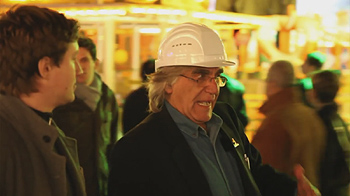
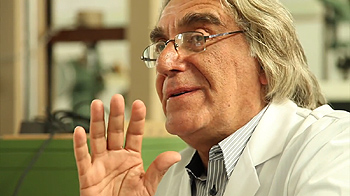
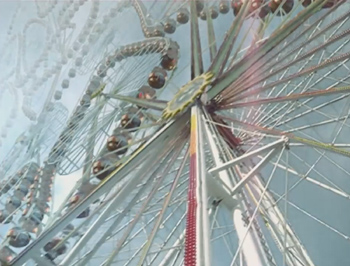

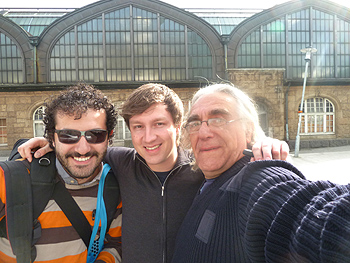
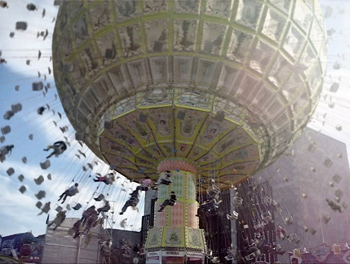

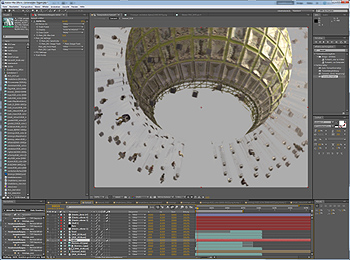
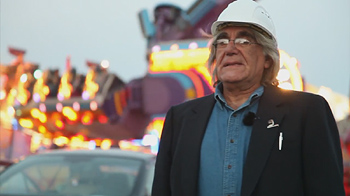
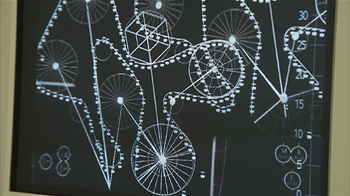
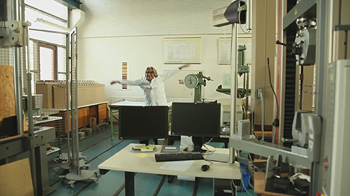



On ne connaît pas Filip.
Filip tu vois mon ommentaire ?